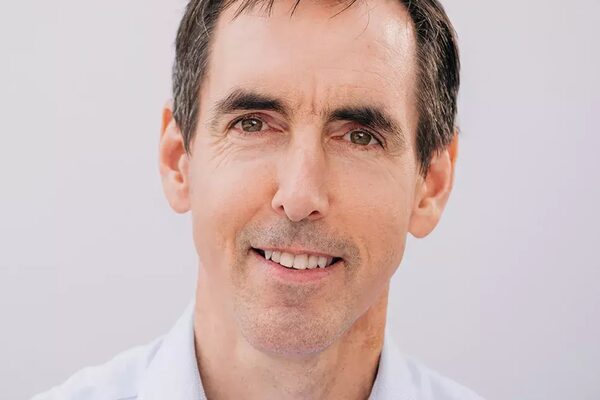
Many of the people we work with – especially those leading organizations, founders of ventures or social entrepreneurs, and people engaged in knowledge work – have jobs that can expand to fill an immense amount of time and space. People in these kinds of jobs face a specific set of challenges about how to define and approach their work and how to spend their time that differ from the challenges of jobs that may be very demanding but are more tightly defined.
As we’ve built our own firm, we’ve designed our roles so that everyone on our team deals with the challenge of limitless work. Administrative roles, for instance, are tightly circumscribed at most firms. At Incandescent, we encourage team members whose roles include a significant component of administrative support to consistently pull up to a higher level of synthesis above their tactical work and to entrepreneurially seek out opportunities to add value across the firm. Since every team member confronts the challenge of limitless work in our organizational model, we’ve done a lot of thinking about how best to deal with it, some of which I share here.
Limitless work implies a need to be clear on priorities, to make decisions on how to advance these priorities, and to stay focused on the path we’ve committed to amidst the many other things we might do. However, there are a few complicating factors:
- There are often unknowns in front of us that limit our ability to plan
- Many of our largest opportunities will be a product of serendipity, whether that’s at the level of a lead that results in a major new client, or an unexpected analogy that causes us to solve a problem in a new way
- The cumulative effect of certain elements of our work may be large, even if the short-term impact of any individual episode is small
Much of the way we work at Incandescent reflects these three factors. For instance, helping people in the outer reaches of our network is rarely the most impactful activity in the short term. However, consistent generosity to those in our network makes a big difference over the long term: it helps us internalize an instinctual orientation to turn towards others and help them achieve their goals, and it gives us a wider, denser network in which we have more durable connections. This in turn increases the odds of big serendipitous events and insights that drive value for the firm: “Wait, couldn’t Amy, whom we helped with a career change five years ago, be the ideal demonstration customer for the new venture that we’re exploring?”
To navigate the interplay of all these dynamics – limitless problems, big unknowns, serendipity, cumulative effects – those in “limitless” roles should aim to create a productive equilibrium between five kinds of work:
- W1. Executing our plans
- W2. Taking in, processing and following up on “stuff coming at us”
- W3. Fulfilling the healthy routines that drive positive cumulative effects
- W4. Pursuing the most promising serendipities
- W5. Engaging our “executive function”: reflecting, formulating priorities and planning
There isn’t one recipe for how to create the right productive equilibrium among these five kinds of work. The best approaches depend on a person’s role, their style and strengths, and the current conditions in their work. The natures and the ratios of these five kinds of work will change as careers evolve and contexts shift; but the fact of needing to balance persists.
Creating the right equilibrium among the five kinds of work involves braiding them together so that the different modes function together as a whole. The short-term value of executing plans (W1) almost always outweighs the short-term value of building and sustaining healthy routines (W3) and pursuing serendipity (W4). It is important to establish an explicit model for using the “executive function” to design the right long-term balance (W5), where we establish a baseline of routines and a certain amount of slack to pursue promising, not yet well-defined possibilities (new ideas, new relationships, etc.) that will have the right long-term effects, and then shape work to execute plans for the most important priorities at hand within the constraints of that baseline. This “executive function” is just as relevant for a junior associate figuring out how to build modeling skills even as she builds a model under deadline pressure as it is for me in my role building and leading our firm.
While the right balance among the five kinds of work and the best techniques to “braid” them will vary across individuals, to make this thinking concrete, I’ll offer a couple of observations about how I’m navigating this art of balancing and integrating. In these notes below, I’m labeling the five kinds of work W1 through W5, to make the connections clearer.
- I’ve written in the past about the importance I attach to achieving economy of effort in executing plans (W1) – the elegance of “three lines to a bird.” One of the most important aspects of “braiding” in my own work is making work with clients “double count” as R & D, which often means stepping back and trying to solve for the general case behind the specific circumstances the client faces. For example, I’ve been noticing in a few recent conversations with innovation leaders in large corporates that there’s a lot of ambiguity about what their brief really is, and that the dynamic of how the CEO productively engages as a sponsor with the agenda the innovation leader owns will be critical to the company’s ability to achieve returns from “softer” investments in innovation capacity. Rather than focus on what are the specific steps required to make the most of these particular opportunities (W1), I believe that I’ll achieve much more by treating these recent conversations as a kind of serendipity (W4) prompting me to get above the specific cases to develop a more general view of what good looks like in this particular sponsor-owner relationship. Taking this kind of stance frequently builds a habitual way of seeing (W3) that makes it easier to see in the flow of day-to-day events (something that could be dealt with in a localized transactional way in (W2), like a note from a former colleague: “would you be up for a conversation with Sarah, who has recently taken on an innovation role in XYZ Company”) the opportunity to build on a compelling vector of developing ideas.
- I know one of my occupational hazards is that a lot of stuff “comes at me,” some of which is fairly urgent and much of which is interesting. While being highly conscientious (i.e., scoring at the top of the scale of this particular attribute on the personality Big Five) is in some ways a strength, it exacerbates the risk of being distracted by feeling I should respond to much of what’s in my inbox in a timely and thoughtful way. The focus on how to take things arriving in my inbox and “seeing them as” larger opportunities to advance areas I’m thinking about elevates this risk of distraction still further. It wouldn’t be good to spend too much of my time in (W2).
- Given these realities, I’ve invested a lot of design time (W5) over the years building and refining systems that enable others to filter my email and place it in folders that correspond to the different action I need to take (e.g., same-day response vs. “need to see” but don’t need to respond), and that help me take specific bounded time blocks and engage with email without incurring a lot of switching costs. There are currently 25 items in a folder marked “needs response not urgent.” There’s no need for me to be distracted from the (W3) work of writing this post, and as I write the post further reflecting on how I follow through on my own best intentions for how I use my time.
- I’ve found that as I build relationships with executives and founders, often one of the more useful things I can do is demonstrate my own systems for processing (W2) and help them reflect on how they can better deal with the challenges they’re experiencing about handling what comes at them. For instance, it’s pretty common that delays and wasted effort result from dealing with quick approvals on decisions and “you should knows.” Email often works poorly for this with executives who have overwhelming inboxes. My own solution to this problem is to have a Google doc called Daily Review that everyone knows I’ll review at least every 24 hours, wherever in the world I am. Everything in this document is short and to the point – if there’s a need for more detail, the entry can reference an email. I respond inside the Google doc (a daily task that takes 5-10 minutes), and everyone who has “left something for me” that requires a decision knows to check back there.
Because my chief of staff and assistant are “experts” in managing these kinds of systems, when these kinds of techniques are relevant to clients and ventures we’re working with, they often work with our clients or their teams to give a deeper briefing on why we designed these systems, how to use them, and how they can be adapted to different contexts. I’ve found that I’ve realized a great deal of serendipity in building relationships (W4) just from sharing what I’ve learned through this iterative work on my own design.
These particular examples reflect my own strengths, challenges and circumstances. Others will no doubt best cope with the phenomenon of limitless work in very different ways. What I believe to be near-universal is the importance of finding the right balance among the five kinds of work (W1) – (W5), a balance that will shift over time but shouldn’t be left to chance, and the importance of braiding these different modes of working together so that each form of work feeds the others.
For any leader, entrepreneur, or knowledge worker, there will always be moments when the right thing is just to go all out to achieve a certain goal. If we’re clear that we’re suspending a number of our normal patterns of work – and clear which ones those are – in order to go into this “state of emergency” or “state of opportunity,” that sets us up well to resume our best patterns of work when the big push is completed. Triage is healthy so long as we know we’re doing it, and are conscious about stepping back into a normal rhythm when we’re ready. If one is always in a kind of triage that disrupts one’s best way of working, that’s a sign that one hasn’t solved well enough for what “normal” should be and how “normal” should work, and hasn’t established a baseline set of patterns that functions well.



